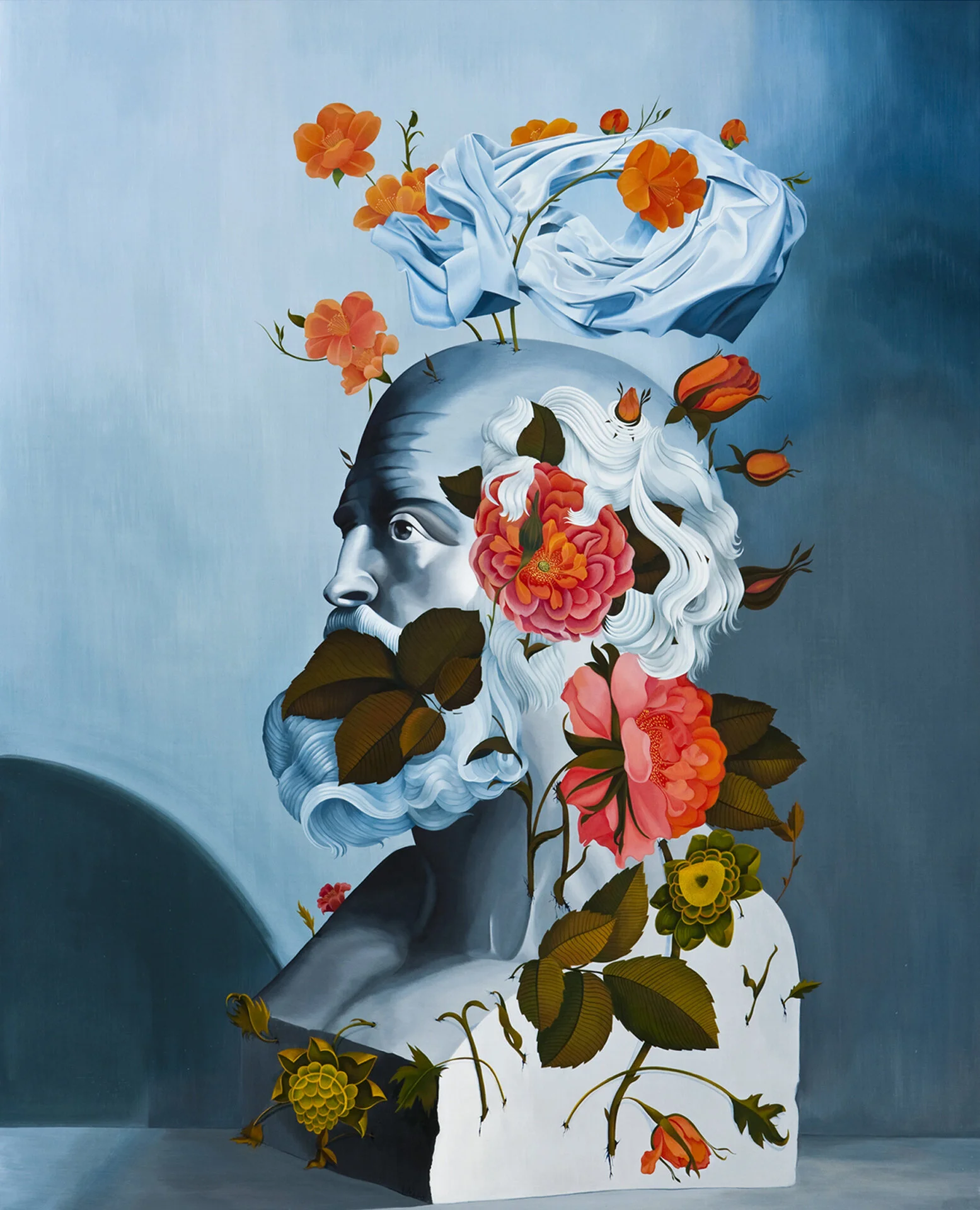طراوت | TARAVAT is a record of one Iranian-American woman’s attempts to grapple with the difficult legacy of women’s freedoms and Muslim identity—to transform it visually, to make something both beautiful and uncomfortable. Investigating the cultural taboos that reflect on gender and political authority, Taravat Talepasand offers a forum for the Woman, Life, Freedom movement—and the intersectionality of the international fight for human rights and female autonomy.
Made in Iran and born in America during the 1979 Iranian Revolution, Talepasand explores how women navigate the geographic and physiological boundaries between East and West, revealing women’s bodies and perspectives becoming surfaces imprinted with the uncertainties of political and social upheavals—past and present. Scholar and curator Dr. Jordan Amirkhani describes, “This mid-career survey points to the irrefutable fact that the symbolic content of women’s bodies and representational histories mark an uneasy marriage between an Iran shaped by the will of Allah, the will of the Father, and the exuberant wills of the Iranian people.”
The exhibition offers a mix of paintings, drawings, collage, sculpture, video, and neon sculpture. Referencing the visual conventions of Pop art, propaganda, and appropriations, Talepsand’s work is characterized by labor-intensive and often repetitive processes to bring a focus on acceptable beauty and its relationship with art history. The human figure often found in her pieces is a treacherous place between narrative and introspection.
By mixing these disparate strands, Talepasand creates a cognitive short circuit, asking us to reconsider what we think we know. By staging encounters between the aesthetic conventions, techniques, and traditions of European and Persian miniature art, the work challenges viewers to uncover (and thus confront) the tricks and abstractions that inform effective forms of image-making and propaganda that continue to shape our understanding of “Eastern” and “Western” subjecthood and aesthetics. The result is a sophisticated reversal of the assumptions associated with Iranian culture and the ways in which political propaganda often lives between the ancient demand for timelessness, and the modern demand for immediacy.
The work asks the viewer to reconsider the various ideological assumptions that index Iranian identity, state power, and gender in order to consider how the body and the image come to signify and rebel against normative notions of Iranian subjectivity.
The exhibition will be complemented by public programming throughout the summer that will highlight the voices, struggles, and personal stories of artists in the Bay Area who are carrying the torch of the Woman, Life, Freedom movement. More details to follow.





